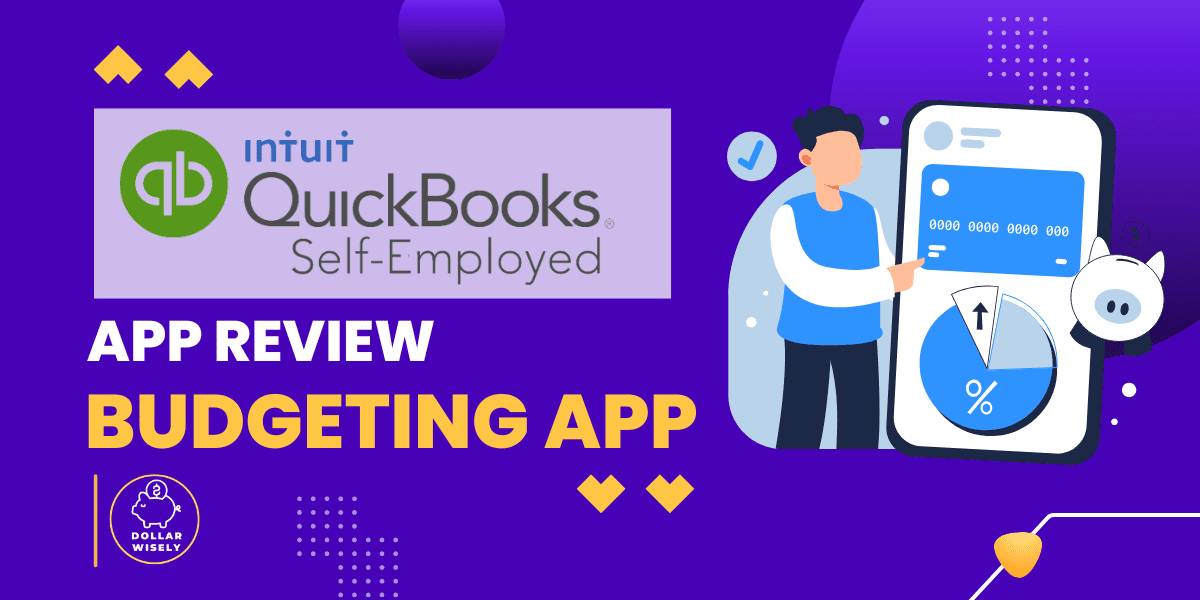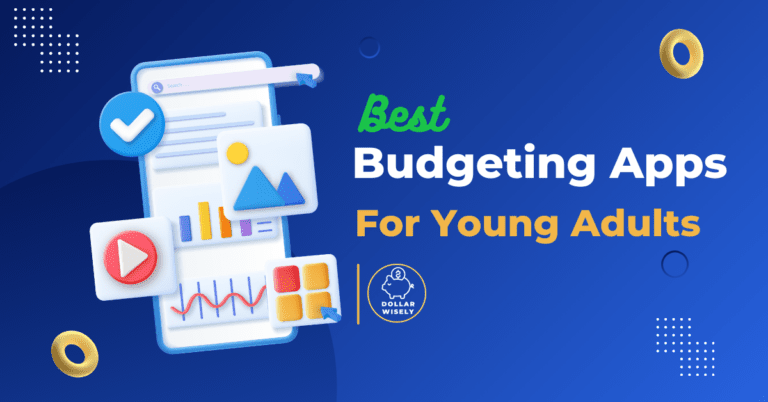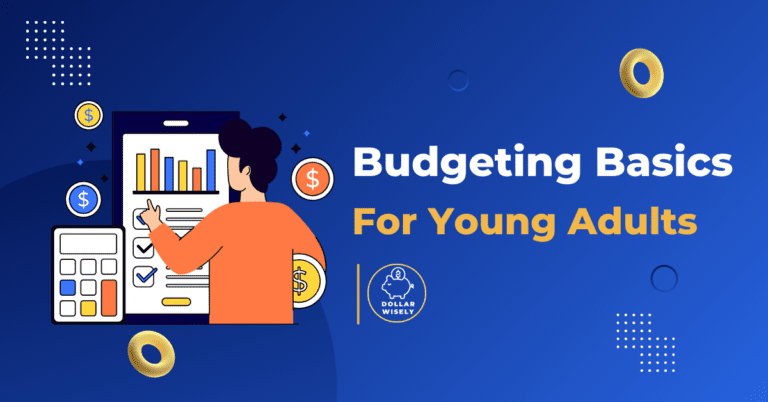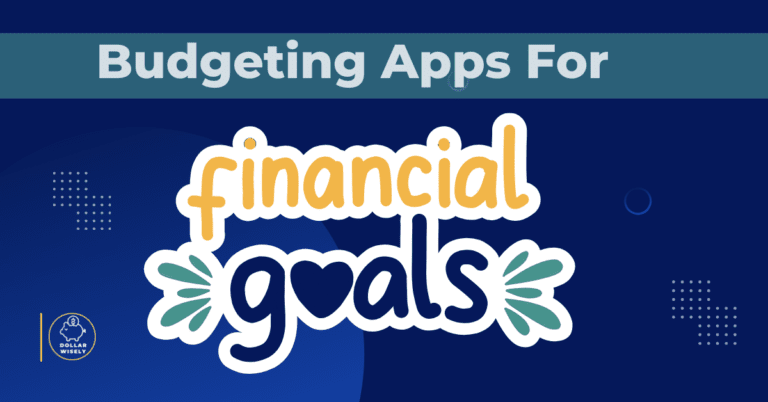Juggling Gigs and Groceries? Is QuickBooks Self-Employed the Answer?
Okay, so you’re a young adult with a side hustle. You’re hustling hard, making extra cash, and pursuing your passions. But let’s be real, managing your finances when you’re juggling multiple income streams and business expenses can be a total nightmare. It’s easy to feel like you’re drowning in receipts, spreadsheets, and tax forms.
I understand the struggle! You want to make money, but you don’t want to be buried under paperwork!
If this sounds familiar, you’re not alone. Many side hustlers struggle to manage their finances effectively. That’s why I’m here to tell you about a budgeting app that’s specifically designed for people like you: QuickBooks Self-Employed. But is QuickBooks Self-Employed actually the Best Budgeting App for Side Hustlers? That’s what we’re going to explore in this detailed review!
In this QuickBooks Self-Employed App Review for Side Hustlers, we’ll break down its key features, explore its pros and cons, and help you determine whether it’s the right financial management tool for your entrepreneurial endeavors. Ready to simplify your finances, maximize your income, and minimize your tax burden? Let’s dive in!
Why Side Hustlers Need a Specialized Budgeting App Like QuickBooks Self-Employed
Why do side hustlers need a specialized budgeting app like QuickBooks Self-Employed? Well, the financial challenges of self-employment are unique. You’re not just managing your personal finances; you’re also running a business.
You’re likely dealing with fluctuating income, business expenses, and complex tax obligations. Traditional budgeting apps are designed for employees with a steady paycheck and may not be sufficient for handling these complexities.
Here are some of the specific challenges that side hustlers face:
- Fluctuating Income: Your income can vary significantly from month to month, depending on the amount of work you get and the payments you receive.
- Business Expenses: You need to track and categorize business expenses, such as supplies, advertising, and travel, to maximize your tax deductions.
- Tax Obligations: You’re responsible for paying self-employment taxes, which can be complicated and time-consuming.
- Separating Business and Personal Finances: It’s important to keep your business and personal finances separate to avoid confusion and ensure accurate record-keeping.
QuickBooks Self-Employed is specifically designed to address these challenges, making it a powerful tool for side hustlers who want to take control of their finances.
So, what exactly is QuickBooks Self-Employed, and how does it work? Let’s take a closer look.
QuickBooks Self-Employed 101: Understanding the Basics
Okay, so you’ve heard about QuickBooks Self-Employed, but you’re not exactly sure what it is or how it works. QuickBooks Self-Employed is a financial management tool that’s specifically designed for freelancers, contractors, and other self-employed individuals.
It’s more than just a simple budgeting app. It offers a range of features to help you manage your income, expenses, and taxes all in one place.
With QuickBooks Self-Employed, you can track your income and expenses, categorize your transactions, track your mileage, create and send invoices, estimate your quarterly taxes, and prepare your tax return.
A Quick Look at QuickBooks Self-Employed’s Key Features
QuickBooks Self-Employed isn’t just a budgeting app; it’s a comprehensive financial management tool specifically designed to help you navigate the unique challenges of self-employment. Here’s a closer look at its key features:
Income and Expense Tracking:
- How it Works: QuickBooks Self-Employed allows you to connect your bank accounts and credit cards to automatically import your transactions. This eliminates the need for manual data entry and ensures that you’re not missing any income or expenses. You can then easily categorize your transactions as business or personal expenses, which is crucial for tax purposes. The app also allows you to add notes and attachments to transactions, so you can keep track of receipts and other important documentation.
- Why It’s Great for Side Hustlers: Juggling multiple income streams and business expenses can be overwhelming. This feature simplifies the process of tracking everything in one place, making it easier to see where your money is coming from and where it’s going.
- Pro Tip: Set up rules to automatically categorize recurring transactions. This will save you time and ensure consistency in your expense tracking.
Mileage Tracking:
- How it Works: QuickBooks Self-Employed automatically tracks your mileage for business purposes using your smartphone’s GPS. Simply turn on the mileage tracking feature, and the app will record your trips automatically. You can then classify each trip as business or personal.
- Why It’s Great for Side Hustlers: Mileage is a significant deductible expense for many self-employed individuals. This feature makes it easy to track your mileage and ensure that you’re claiming all eligible deductions.
- Pro Tip: Review your mileage logs regularly to ensure that they’re accurate. You can also manually add trips if needed.
Invoice Management:
- How it Works: QuickBooks Self-Employed allows you to create and send professional invoices to your clients, track payments, and manage your accounts receivable. You can customize your invoices with your logo and branding, and you can set up automatic payment reminders to ensure that you get paid on time.
- Why It’s Great for Side Hustlers: Getting paid on time is essential for managing your cash flow. This feature makes it easy to invoice your clients and track your payments, so you can stay on top of your finances.
- Pro Tip: Set up automatic payment reminders to send to your clients a few days before their invoices are due. This can help you get paid faster and avoid late payments.
Tax Preparation:
- How it Works: QuickBooks Self-Employed helps you estimate your quarterly taxes and prepare your tax return. The app automatically categorizes your expenses for tax purposes and provides reports that you can use to file your taxes. It also integrates with TurboTax Self-Employed, making it easy to file your taxes online.
- Why It’s Great for Side Hustlers: Tax preparation can be a major headache for self-employed individuals. This feature simplifies the process and helps you avoid mistakes that could lead to penalties.
- Pro Tip: Consult with a tax professional to get personalized advice on tax planning and compliance.
Bank Account Integration:
- How it Works: QuickBooks Self-Employed integrates seamlessly with your bank accounts and credit cards, making it easy to track your income and expenses. This eliminates the need for manual data entry and ensures that all your transactions are accounted for.
- Why It’s Great for Side Hustlers: Connecting your bank accounts to QuickBooks Self-Employed provides a central hub for all your financial information, making it easier to manage your finances and stay organized.
- Pro Tip: Regularly reconcile your accounts with your bank statements to ensure that all your transactions are accurate.
So, what makes QuickBooks Self-Employed so great for side hustlers? Let’s take a look at its key features.
Unleash Your Financial Power: QuickBooks Self-Employed for Side Hustlers
While QuickBooks Self-Employed offers many benefits, it has some specific features that make it particularly useful for side hustlers. These features are designed to address the unique financial challenges of self-employment and help you manage your money more effectively.
With these features, it’s easy to see why so many call QuickBooks Self-Employed the Best Budgeting App for Side Hustlers.
Features Tailored for the Gig Economy
QuickBooks Self-Employed truly shines because it understands the unique financial landscape of the gig economy. Here’s how it caters specifically to the needs of side hustlers:
Separating Business and Personal Expenses:
- Why It Matters: This is a game-changer for tax time. Trying to sift through your bank statements to figure out which coffee runs were client meetings, and which were just your caffeine fix is a nightmare. QuickBooks Self-Employed lets you easily mark each transaction as business or personal, keeping everything organized and preventing you from missing out on potential deductions.
- Imagine This: You’re a freelance photographer. With a few taps, you can categorize your camera equipment purchases, travel expenses to photoshoots, and even a portion of your phone bill as business expenses. This makes tax preparation significantly easier and more accurate.
- Benefit: Simplifies bookkeeping, prevents commingling of funds, and makes tax preparation less stressful.
Tracking Mileage Automatically:
- Why It Matters: This is a huge time-saver and a potential goldmine for tax deductions. The IRS allows you to deduct a certain amount per mile for business travel, and this can add up quickly.
- Imagine This: You’re a food delivery driver. QuickBooks Self-Employed automatically tracks every mile you drive while you’re working, ensuring that you’re claiming all eligible mileage deductions. No more manually logging every trip in a notebook!
- Benefit: Saves time, maximizes tax deductions, and ensures accurate mileage records.
Creating Professional Invoices:
- Why It Matters: Sending professional invoices is essential for getting paid on time and maintaining a professional image. QuickBooks Self-Employed allows you to create and send customized invoices with your logo and branding.
- Imagine This: You’re a freelance writer. With QuickBooks Self-Employed, you can easily create and send invoices to your clients, track payments, and send reminders for overdue invoices. No more chasing down clients for payment!
- Benefit: Improves cash flow, enhances professionalism, and simplifies invoice management.
Estimating Quarterly Taxes:
- Why It Matters: As a self-employed individual, you’re responsible for paying your own self-employment taxes, which are typically due quarterly. This can be a surprise if you’re not prepared! QuickBooks Self-Employed helps you estimate your quarterly taxes based on your income and expenses, so you can avoid penalties and plan accordingly.
- Imagine This: You’re a virtual assistant. QuickBooks Self-Employed helps you estimate your quarterly taxes based on your income and expenses, so you can set aside enough money to pay your taxes on time. No more scrambling to find the money at the last minute!
- Benefit: Prevents tax surprises, simplifies tax planning, and helps you avoid penalties.
Categorizing Expenses for Tax Deductions:
- Why It Matters: Knowing which expenses are tax-deductible is crucial for maximizing your tax savings. QuickBooks Self-Employed automatically categorizes your expenses for tax purposes based on IRS guidelines.
- Imagine This: You’re a social media manager. QuickBooks Self-Employed automatically categorizes your expenses for advertising, software subscriptions, and office supplies, making it easy to identify deductible expenses and prepare your tax return.
- Benefit: Simplifies tax preparation, maximizes tax deductions, and ensures compliance with IRS regulations.
So, how do you actually set up QuickBooks Self-Employed and start using it effectively? Let’s walk through the process.
Getting Started: A Step-by-Step Guide to Setting Up QuickBooks Self-Employed
Setting up QuickBooks Self-Employed is a relatively simple process that can be completed in just a few steps.
Follow these steps to setup the Best Budgeting App for Side Hustlers!
Okay, let’s expand on the “(H3) Launching Your Side Hustle Finances with QuickBooks” section to provide a more detailed and user-friendly step-by-step guide for young adults setting up QuickBooks Self-Employed.
Launching Your Side Hustle Finances with QuickBooks
Ready to ditch the financial chaos and get your side hustle finances organized? Setting up QuickBooks Self-Employed is easier than you think! Here’s a step-by-step guide to get you started:
Creating Your Account:
- How to Do It: Head over to the QuickBooks Self-Employed website and sign up for an account. You’ll need to provide your email address, create a password, and select a subscription plan. QuickBooks Self-Employed offers several different plans with varying features and prices.
- Choosing a Subscription Plan: Take some time to compare the different subscription plans and choose the one that best fits your needs. If you’re just starting out, the basic plan might be sufficient. As your business grows, you can always upgrade to a more advanced plan with more features. Also, keep an eye out for discounts or promotions that can help you save money on your subscription.
- Free Trial Tip: Make sure to take advantage of the QuickBooks Self-Employed free trial! This will give you a chance to try out the app and see if it’s right for you before committing to a subscription.
Connecting Your Bank Accounts and Credit Cards:
- How to Do It: Securely link your bank accounts, credit cards, and other financial accounts to QuickBooks Self-Employed. This allows the app to automatically import your transactions, saving you time and effort.
- Security First: QuickBooks Self-Employed uses bank-level encryption and other security measures to protect your data, but it’s always a good idea to be cautious when linking your financial accounts to any app. Use a strong password and enable two-factor authentication for added security.
- Troubleshooting Tip: If you’re having trouble linking your accounts, check your internet connection and make sure you’re using the correct login credentials. You can also contact QuickBooks Self-Employed support for assistance.
Setting Up Your Business Profile:
- How to Do It: Enter your business information, such as your name, address, and industry. This information will be used on your invoices and other financial documents.
- Professional Touch: Make sure your business name and contact information are accurate and professional. This will help you create a positive impression with your clients.
- Industry Selection: Choose the industry that best describes your side hustle. This will help QuickBooks Self-Employed categorize your expenses correctly and identify potential tax deductions.
Customizing Your Categories:
- How to Do It: Customize your expense categories to fit your specific business expenses. QuickBooks Self-Employed comes with a set of pre-defined categories, but you can also create your own custom categories.
- Get Specific: Think about the different types of expenses you incur in your side hustle and create categories that reflect those expenses. For example, you might create categories for supplies, advertising, marketing, travel, software subscriptions, and more.
- Tax-Friendly Categories: Use categories that align with common tax deductions. This will make it easier to prepare your tax return at the end of the year.
Setting Up Mileage Tracking:
- How to Do It: Enable automatic mileage tracking to start tracking your business mileage. QuickBooks Self-Employed uses your smartphone’s GPS to track your trips automatically.
- Enable Location Services: Make sure you’ve enabled location services on your smartphone and that QuickBooks Self-Employed has permission to access your location.
- Classify Trips: At the end of each day or week, review your mileage logs and classify each trip as business or personal. You can also add notes to each trip to remind yourself of the purpose of the trip.
- Battery Saver Tip: Be aware that automatic mileage tracking can drain your smartphone’s battery. Consider using a car charger or adjusting your tracking settings to conserve battery life.
So, what’s the verdict? Is QuickBooks Self-Employed actually the Best Budgeting App for Side Hustlers? Let’s weigh the pros and cons.
The Real Deal: Weighing the Pros and Cons of QuickBooks Self-Employed
While QuickBooks Self-Employed offers a range of benefits, it’s important to be aware of its potential drawbacks. Here’s a balanced assessment of the pros and cons of using QuickBooks Self-Employed as a side hustler:
It’s important to weigh these to see if this the Best Budgeting App for Side Hustlers is for you!
What Makes QuickBooks Shine (and What’s Not So Shiny)
Pros:
- Tax preparation features.
- Mileage tracking.
- Invoice management.
- Income and expense tracking.
- Bank account syncing.
Cons:
- Subscription fee.
- Can be complex to use.
- Limited budgeting features compared to dedicated budgeting apps.
Maybe QuickBooks Self-Employed is not for you, what other options are there?
Beyond QuickBooks: Exploring Other Financial Management Options
While QuickBooks Self-Employed is a powerful tool, it’s not the only financial management option available. If you’re not sure if QuickBooks Self-Employed is the right fit for you, here are a few alternatives to consider:
There may be other options for the Best Budgeting App for Side Hustlers!
Apps to Keep on Your Radar
Wave Accounting:
A free accounting software for small businesses.
FreshBooks:
A popular invoicing and accounting software.
GoDaddy Bookkeeping:
Simple bookkeeping software for small businesses.
So how do you make sure you are getting the most out of QuickBooks Self-Employed?
QuickBooks Mastery: Pro Tips for Side Hustlers
If you decide to use QuickBooks Self-Employed, here are some tips for maximizing its effectiveness and achieving your financial goals:
Getting the most out of a budgeting app takes a little effort.
Getting the Most Out of QuickBooks Self-Employed
Track Your Mileage Diligently:
Maximize your tax deductions by tracking your mileage accurately. Use the automatic mileage tracking feature or manually enter your trips.
Categorize Expenses Accurately:
Ensure that you’re claiming all eligible deductions by categorizing your expenses correctly. Use the IRS guidelines to help you determine which expenses are deductible.
Reconcile Your Accounts Regularly:
Ensure accurate tracking by reconciling your accounts with your bank statements regularly.
Take Advantage of the Tax Estimator:
Plan for your quarterly tax payments by using the tax estimator feature. This will help you avoid surprises at tax time.
Consult with a Tax Professional:
Get personalized advice on tax planning and compliance from a qualified tax professional.
Is QuickBooks Self-Employed’s price tag worth it?
Is It Worth The Price? Considering the Cost of QuickBooks Self-Employed
One of the biggest concerns people have about QuickBooks Self-Employed is its subscription fee. However, many users find that the value they receive from the app far outweighs the cost.
It’s important to look at all aspects of QuickBooks Self-Employed.
Okay, let’s expand on the “(H3) Justifying the Expense” section to provide more concrete examples and help young adults truly assess the value proposition of QuickBooks Self-Employed.
Justifying the Expense: Is QuickBooks Self-Employed Really Worth It?
Let’s be real: as a side hustler, you’re probably trying to keep your expenses as low as possible. So, paying a subscription fee for QuickBooks Self-Employed might seem counterintuitive. But before you dismiss it, let’s break down how the app can actually save you money and time, making the investment worthwhile.
Calculating Your Potential Tax Savings:
- The Key Question: How much are you currently paying in taxes, and how much could you potentially deduct with better expense tracking?
- The Math: Let’s say you earn $10,000 in side hustle income and are in a 22% tax bracket. Without properly tracking your deductions, you’d owe $2,200 in taxes. But with QuickBooks Self-Employed, you might be able to deduct $3,000 in expenses (mileage, supplies, software subscriptions, etc.). This would reduce your taxable income to $7,000, and your tax bill to $1,540. That’s a savings of $660!
- Actionable Tip: Use QuickBooks Self-Employed to estimate your potential tax savings based on your income and expenses. The app can help you identify deductible expenses you might be missing.
Valuing Your Time Saved:
- The Key Question: How much time are you currently spending on bookkeeping and tax preparation, and what is your time worth?
- The Time Cost: Manually tracking expenses, preparing invoices, and filing your taxes can take hours each month. Let’s say you’re spending 5 hours per month on these tasks, and your hourly rate for your side hustle is $30. That’s a time cost of $150 per month!
- The Time Saved: QuickBooks Self-Employed can automate many of these tasks, freeing up your time to focus on growing your business and earning more money. Even if it saves you just 2 hours per month, that’s still a savings of $60 in time.
- Actionable Tip: Track how much time you’re spending on bookkeeping and tax preparation each month. Then, estimate how much time QuickBooks Self-Employed could save you.
Considering the Peace of Mind:
- The Key Benefit: Putting a value on the stress and anxiety of potentially making errors, or missing something important.
- Compliance Confidence: Knowing that your finances are organized and compliant with IRS regulations can provide invaluable peace of mind. The cost of an audit or penalties for inaccurate tax filings can far outweigh the cost of a QuickBooks Self-Employed subscription.
- Focus on Growth: When you’re not worrying about your finances, you can focus on what you do best: growing your side hustle and pursuing your passions.
- Actionable Tip: Think about the emotional benefits of using QuickBooks Self-Employed. How much is it worth to you to have peace of mind and avoid the stress of financial chaos?
By carefully considering these factors, you can determine whether the cost of QuickBooks Self-Employed is justified for your individual situation. Remember, it’s not just about the money you spend; it’s about the value you receive in return.
And with that, we reach our final thoughts!
Level Up Your Side Hustle Finances: QuickBooks Self-Employed Can Help!
Ultimately, QuickBooks Self-Employed is a powerful tool that can help side hustlers take control of their finances and achieve their goals. While it’s not the only option available, its tax preparation features, mileage tracking, and invoice management capabilities make it a strong contender for the Best Budgeting App for Side Hustlers.
So, if you’re ready to simplify your finances, maximize your income, and minimize your tax burden, give QuickBooks Self-Employed a try.
Ready to Take Control of Your Side Hustle Finances?
Now it’s time to find the perfect app and transform your financial future!
Check out our guide on “Free vs Paid Budgeting Apps” to weigh your options
Learn more about our top recommended budgeting apps for young adults and find the perfect one for you!
Check out our guide on “Free vs Paid Budgeting Apps” to weigh your options
Ready to take control of your side hustle finances? Learn more about our top recommended budgeting apps for young adults and find the perfect one for you!
Want to explore all your options for managing your money effectively as a young adult? Head over to our ultimate guide to budgeting apps for young adults for even more insights and recommendations!







